Should You Rotate Your Mattress? Deciphering the Benefits and Recommendations.
The Comprehensive Guide
Nonetheless, regardless of whether you possess a brand-new mattress or endeavoring to revive an antiquated one, the query often arises: should you partake in the practice of rotating your mattress?
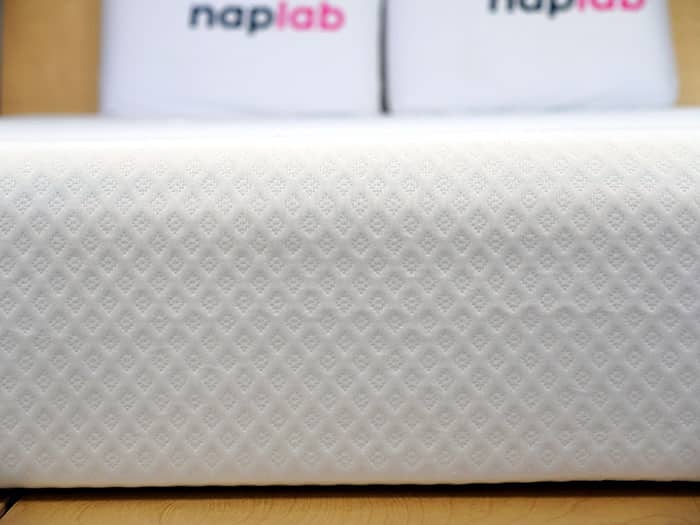
Is it beneficial to rotate your mattress?How frequently should you rotate a mattress?Is it necessary to rotate a memory foam mattress?Should you rotate a mattress with a pillow top?Can rotating your mattress alleviate back issues?Is flipping your mattress advisable?
In the majority of cases, the answer unequivocally favors the affirmative. Rotating your mattress can prove to be an effective strategy for prolonging its lifespan while ensuring even wear and tear.
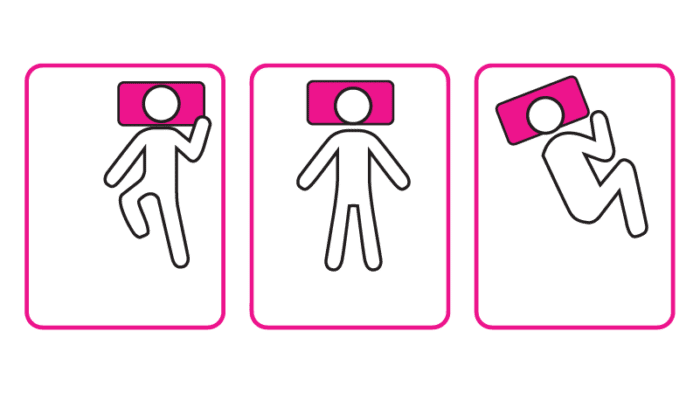
Conceptually, this entails executing a profound 180° turn, where the former foot of the bed arbitrarily becomes the head.
Similar to the philosophy behind rotating your car’s tires, a rotated mattress exhibits <strong)a more uniform distribution of wear, thus minimizing unsightly indentations or support complications.
The frequency at which you will find yourself rotating your mattress significantly relies on the manufacturer’s instructions. Each mattress company typically adheres to its unique protocol.
It is of paramount importance to familiarize oneself with the minutiae contained within the fine print. Neglecting to rotate your mattress can potentially precipitate a reduction in its lifespan or, in certain circumstances, jeopardize the warranty agreement.

As a general rule of thumb, <strong)rotation tends to be advisable within the first half-year and subsequently on a yearly basis.
Regarding the durability of your mattress, regularly executing rotations can significantly augment its longevity. On average, high-performance mattresses can triumphantly endure the test of time, spanning a period of 10 to 12 years. That being said, exceptions exist. To delve deeper into this matter, consult the following resource: an in-depth analysis of the typical lifespan of mattresses.
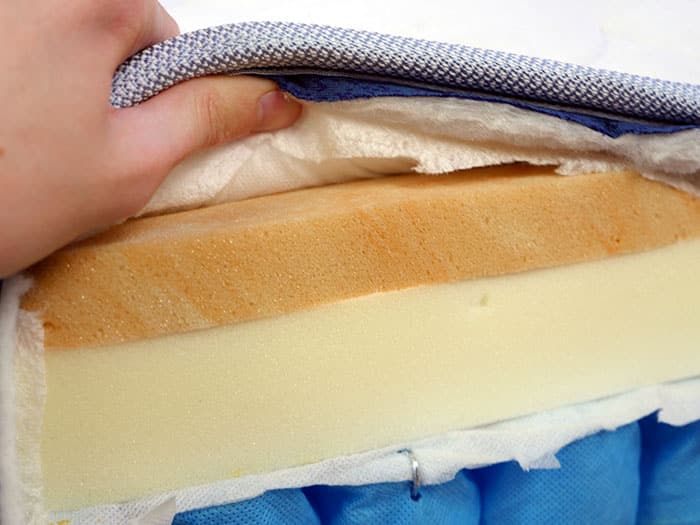
Lastly, it is worth noting that memory foam mattresses warrant rotational endeavors. Unless explicitly specified by the manufacturer, rotation should indeed be embraced as a standard practice.
Bear Elite Hybrid copper memory foam layer
This principle applies not only to memory foam mattresses, but to virtually all types of mattresses.
Indeed, it is advisable to periodically rotate a pillow top mattress. Just like with memory foam mattresses, unless explicitly instructed otherwise by the mattress manufacturer, it is recommended to regularly rotate the mattress.
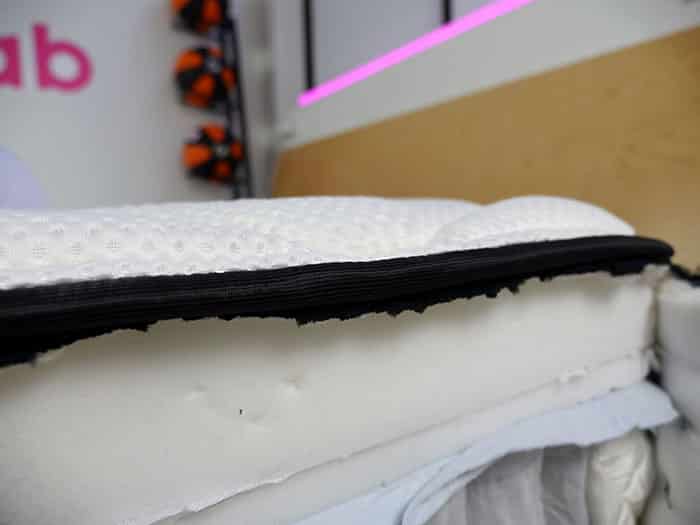
The DreamCloud Premier pillow top mattress, for instance, should ideally be rotated once a year.
It is always prudent to verify with the manufacturer, as not all mattresses require rotation. However, the vast majority of mattresses benefit from regular rotation.
If you sleep alone, you may also consider sleeping on the opposite side of the bed in order to promote even wear of the mattress.

By alternating sides and regularly rotating the mattress, you optimize the entire surface area of the mattress and minimize the risk of uneven wear and tear.
In many instances, rotating your mattress can help alleviate back pain and other discomfort by ensuring that you derive the best possible performance from the mattress.
Failure to rotate your mattress may result in permanent indentations and premature sagging. By regularly rotating the mattress, you take full advantage of the mattress’s surface and ensure even wear.
This can contribute to the well-being of your back and reduce other sources of discomfort by allowing the mattress to provide the optimal support and comfort.
As with any general rule, exceptions exist. The exception in this case pertains to zoned mattresses.
Zoned mattresses are engineered to be slept on in a specific direction, with the head at the top and the feet at the bottom.
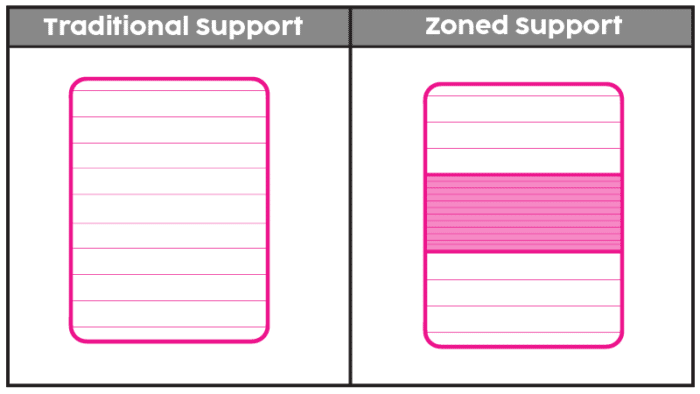
Unlike traditional support systems that offer uniformity across the mattress’s surface, zoned support systems exhibit variation.
Such mattresses typically feature 3-7 distinct zones, which respond differently to surface pressure and span from head to toe.
These zones may consist of coils that are closely spaced in the midsection or softer foams at either end of the mattress.
Rotating these mattresses can disrupt the intended comfort and support zones, resulting in an overall decrease in performance.
Among the highly rated mattresses we have personally evaluated, some incorporate zoned support systems.
It is essential to consult the manufacturer to determine whether rotating the mattress is necessary, as zoned support systems substantially differ between brands. Typically, the warranty will provide guidance regarding if and when to rotate the mattress.
The frequently asked question is whether flipping your mattress is a good idea. The answer is most likely no.
In general, mattresses consist of three main layers: the cover, the comfort layer, and the support layer.
The cover, which is the first layer your body comes into contact with, can be thin, plush, quilted, or pillow-top.
The comfort layer, responsible for contour, comfort, and pressure relief, can be made of memory foam, poly foam, micro-coils, pocketed coils, latex, or other materials.
The support layer, located at the bottom of the mattress, provides support for all the layers above and can be made of foam, coils, or other materials.
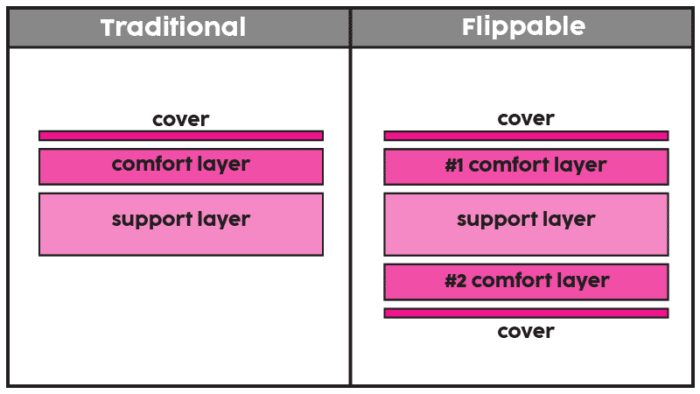
Determining if your mattress is flippable requires understanding how these layers are constructed. Flipping a non-flippable mattress will not provide the same level of support as when used as intended. Only flippable mattresses, which have a comfort layer on both sides, can be flipped.
These flippable mattresses can have two different levels of firmness within a single mattress, offering versatility.
Examples of flippable mattresses we have personally reviewed include:
No, flipping a non-flippable mattress will result in sleeping on the hardest support materials on the bottom side, while the comfort materials act as the support layer. This will lead to poor support, comfort, and an unpleasant sleeping experience.
Rotating or flipping a mattress can help prolong its lifespan and prevent sagging or uneven wear. Before doing this, it is recommended to check the manufacturer’s instructions for any specific recommendations.
If you don’t rotate your mattress, it may wear unevenly, especially if you sleep alone or with a partner who has a different size or weight. Therefore, rotating your mattress helps ensure even wear.
For a new mattress, it is advised to rotate it twice within the first year and then once a year thereafter.
Yes, rotating your mattress can indeed prevent sagging or uneven wear.
If your current mattress is no longer suitable, we can assist you in finding a new one. Our personalized mattress recommendations will help you make a confident purchase decision.

To better understand your needs, please take our 2-minute mattress quiz. We will provide a custom recommendation just for you, ensuring you find your perfect fit.
Click here to take our 2-minute mattress quiz.


